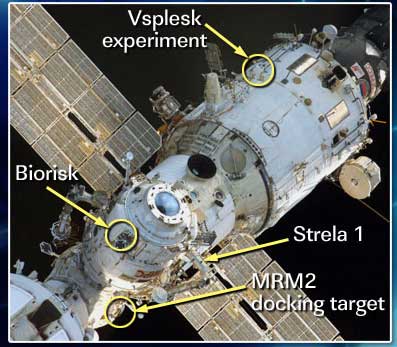Dr. Vladimir F. Utkin, Director of TSNIIMASH, RSA (Russia Space Agency)
非常に複雑な作業であるISSの建設が始まっている。皆さんと一緒に21世紀に宇宙での建設に一歩を踏み出し、ISSに世界の研究者が集まって、地上の人々に役立てる時期にきた。ISS計画が始まったときは多くの批判、反対があった。しかし、サービスモジュールを打ち上げるに至った。いよいよ研究が始まって、ISSに人が住み始める。
新しいアプローチの宇宙の研究が必要になってきている。ロシアは宇宙研究の資金が足りないようにいわれている様に思うが、資金不足は国内改革のせいではない。他国でも同じではないかと思うが、資金が出ないのは地上での研究要求に応えていないからではないかと思われる。
例えばISSに世界の研究者がきていろいろな研究が、15年間されることになる。地上の要望にこたえるという観点では、その間に地震の予知ができるかもしれない。日、米、ロ、中の地上での地震研究でまだ予知はできていないが、15年間の共同研究のチャンスを活かせるに違いない。

宇宙環境利用は2つに分けられる。一つは産業関連利用で、今一つは科学研究利用である。産業関連利用ではそれによって生じた、地球環境問題、環境自然の保護等に対し、科学研究では、地震、オゾン層、その他地球上の現象に対し、政府資金が出るべきである。
サービスモジュールはバイコヌールで準備中であり、11月打ち上げである予定である。ロシアにはミール運用の経験がある。多くの教訓がある。
長期(15年)のISS利用計画については予稿集にある通りである。短期(5年)の計画については、年6回プログレスが輸送する。人はソユーズによる。宇宙飛行士は荷降しと調整、組み立てで負担は大きい。
サービスモジュールでは研究が始まっている。例えば,次のような研究が行われる。
- 太陽をその1周期にわたり連続観測する。
- 地震の研究。これまで衛星を使った研究はない
- 電離層の研究
- オゾン層の修復の研究もやりたい
- 環境中の電磁波の研究
- 小型衛星をISSから打ち出すことの研究。μG環境をISSと別に作る。ここで材料実験をやる。大気中のプラズマ研究も正確にできる
- 医学生物研究もやりたい。生理学、医学、放射能安全性、生物研究等。また、生理学では適応メカニズムを研究する。心血管の研究、循環器の研究、生化学データの取得等。やることのプログラムは明確であり、各国の専門家でも検討されている。軌道上放射線環境での研究も必要である。生物関係もプログラムされており、バイオテクノロジー研究はミールでも既にやっている。
- 技術分野も重要である。宇宙デブリをどう規制できるか、どう回収するのかといった研究がある。また、素材の耐久性研究や、ステーション内の空気の研究、オペレータの作業性向上もやる。
OHPにはどういう装置が何時上がるかが書いてある。
- プラットフォーム上で組み立てる機器や小型衛星係留システムが有用である。純粋なサブサテライトで、電気物理的係留システムに関心がある。
- 低温万能サイトも必要である
- 宇宙天文学、大気天文学も意味がある
- 宇宙エンジンの研究も重要
- 船外空間の気体汚染にも関心がある
<質疑応答>
(質問)SURC 山中)
地震の予知について、ポリャコフの本に、銀色の雲を見たというのがある。ベテランの宇宙飛行士しか見分けられないらしい。人工衛星のセンサーとどこが違うのか?
(回答)
一般に地震の予知に慎重過ぎると思う。間違った予報を出すと首が飛んだりする。これからは15年という時間があるから、宇宙と地上の連携ですすめるべきである。すなわち、地上の前兆現象と宇宙の前兆現象を組み合わせる体制を作るべきである。宇宙飛行士が何人も見ることが重要である。こういう地上に貢献する研究をやらずに、ただ火星の研究をやろうといっても誰も賛成しない。日本という自然に注意の払われている国に来ることができてうれしい。皆さんの活躍を期待しています。



















